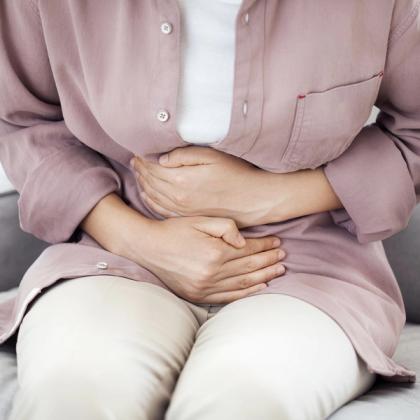The most common cause of peptic ulcers (gastric and duodenal) is infection with Helicobacter pylori (H. pylori) or the long-term use of nonsteroidal anti-inflammatory drugs (NSAIDs). Other factors such as excessive alcohol consumption, smoking, stress and certain medical conditions may also contribute to the development of peptic ulcers. Symptoms of peptic ulcer disease can vary but may include burning stomach pain, nausea and vomiting, bloating or belching and loss of appetite. Treatment typically involves a combination of lifestyle changes and medication to reduce stomach acid production, eradicate H. pylori infection (if present) and protect the lining of the stomach and small intestine. In this episode, Dr Roger Henderson provides a thorough overview of peptic ulcer disease and talks about the latest advice on diagnosis, investigations and treatment.
Key references
- NICE. Clinical guideline. Gastro-oesophageal reflux disease and dyspepsia in adults: investigation and management (CG184). 18 October 2019.
- GOV.UK. Guidance. Helicobacter pylori in dyspepsia: test and treat. 5 September 2019.
- Moayyedi PM, et al. Am J Gastroenterol. 2017;112(7):988-1013. doi: 10.1038/ajg.2017.154.
- NICE. Clinical guideline. Acute upper gastrointestinal bleeding in over 16s: management (CG141). 25 August 2016.
Key take-home points
- The term “peptic ulcer” refers to both gastric ulcers (GUs) and duodenal ulcers (DUs).
- Peptic ulcers are defined as a break in the mucosal lining of the stomach or duodenum greater than 5 mm in diameter, with depth to the submucosa. Ulcers smaller than this or without obvious depth are called erosions.
- Peptic ulcers result from an imbalance between factors promoting mucosal damage (such as gastric acid, pepsin, H. pylori infection and NSAID use) and those mechanisms promoting gastroduodenal defence (prostaglandins, mucus, bicarbonate and mucosal blood flow).
- H. pylori infection is associated with 9 out of 10 DUs and 8 out of 10 GUs.
- In the developed world, H. pylori incidence has been slowly declining over the past 50 years and NSAID use has increased.
- The incidence of peptic ulcer increases with age; GUs peak in the fifth to seventh decades, while DUs peak 10 to 20 years earlier.
- Accurate estimates require endoscopic studies because symptoms are insensitive and non-specific indicators of peptic ulcer. Dyspepsia occurs in over a third of the population each year, leading to a primary care consultation in 5% and endoscopy in 1%.
- A diagnosis can be highly unreliable on the history alone!
- NICE states that endoscopy is not needed for a first-time presentation unless the patient is over 55 years of age or there are warning signs.
- Test for H. pylori using the urea breath test or stool antigen test; if these are unavailable, laboratory-based serology can be used provided its performance has been locally validated. Serology (antibody) testing gives less accurate results than urea breath testing or stool antigen testing and is unable to distinguish between active and historical infection.
- Leave a 2-week washout period after proton pump inhibitor (PPI) use and a 4-week washout after antibiotic use before testing for H. pylori with a breath test or a stool antigen test, as these drugs supress bacteria and can lead to false negatives.
- Re-test to confirm successful eradication of H. pylori using a carbon-13 urea breath test 6 to 8 weeks after starting treatment.
- For eradication therapy, prescribe triple therapy (a PPI plus two antibiotics) as first line. Amoxicillin plus either clarithromycin or metronidazole is the recommended first-line treatment option and a twice daily PPI of choice. The treatment course is 7 days. In patients who are penicillin allergic, first-line triple therapy is a PPI plus clarithromycin plus metronidazole.
- In practice, in most patients, you will not need to continue long-term acid suppressive therapy after treatment of H. pylori infection.
- Consider specialist referral for any patient with unexplained, or treatment-resistant gastro-oesophageal symptoms, or with H. pylori that has not responded to second-line eradication therapy.
- With PPI therapy, DUs typically heal within 4 weeks and GUs within 8 weeks.
- For patients with peptic ulcers caused by H. pylori, the prognosis post-H. pylori eradication is good. Recurrence of a DU is reduced from two thirds without treatment to 14% with eradication therapy. Recurrence of a GU is reduced from around 50% without treatment to 5% with eradication therapy.
- For ulcers associated with the use of NSAIDs, discontinuing the NSAID (and eradicating H. pylori if present) leads to a low rate of ulcer recurrence. In patients who continue using NSAIDs, ulcer recurrence is high, therefore, co-prescribing of a PPI is advisable.
Create an account to add page annotations
Annotations allow you to add information to this page that would be handy to have on hand during a consultation. E.g. a website or number. This information will always show when you visit this page.
